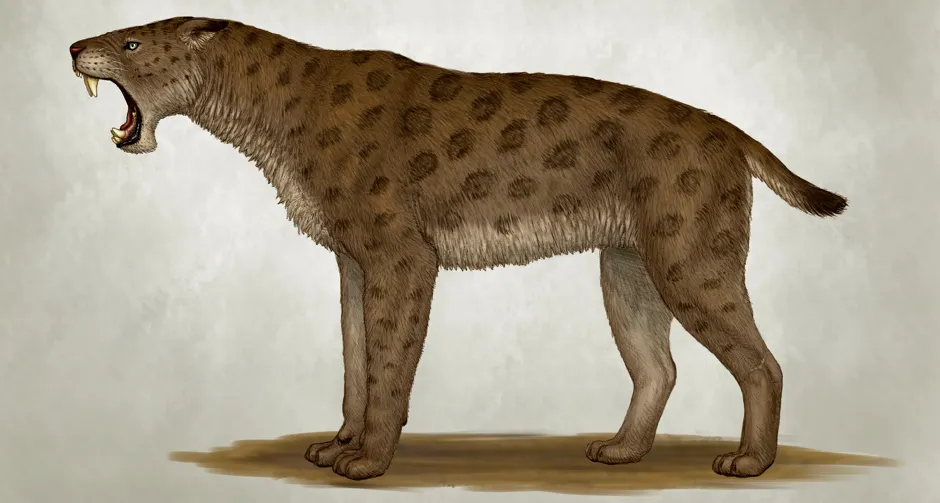Mo Farah’s got nothing on this long-distance runner. The first sabre-toothed cat genome has revealed that the animal was a specialist at hunting prey over long distances.
The cat’s DNA was extracted from the fossil of a particular species of sabre-toothed cat called the scimitar-toothed cat (Homotherium latidens). Like other sabre-toothed cats, Homotherium went extinct towards the end of the Pleistocene age, around 10-30,000 years ago.
This particular specimen, found in permafrost sediments near Dawson City, Yukon Territory, Canada, was at least 47,000 years old.
Read more about big cats:
- Why have big cats evolved but not big dogs?
- Tiger's tender moment wins Wildlife Photographer of the Year 2020 competition
The team at the University of Copenhagen, Denmark used genome sequencing techniques to read the entire genetic code that would’ve been packed into each of the animal’s cell nuclei (its ‘nuclear genome’). The cat’s genetic makeup hints that it was a highly skilled long-distance hunter.
“They likely had very good daytime vision and displayed complex social behaviours,” said co-first author Dr Michael Westbury. “They had genetic adaptations for strong bones and cardiovascular and respiratory systems, meaning they were well suited for endurance running. Based on this, we think they hunted in a pack until their prey reached exhaustion.”
Animals are known to use this hunting strategy, called persistence hunting, when they’re slower than their prey over short distances, but have the stamina to win out over the longer chases. It's also thought to be one of the earliest hunting techniques used by humans.

The genetic analysis also showed that all modern cats are distantly related to sabre-toothed cats, branching off from them on the evolutionary tree at least 22.5 million years ago.
Also, sabre-toothed cats were more genetically diverse than modern cats, which means that there were likely a lot of them around – indeed, their fossils have been found worldwide.
“This was an extremely successful family of cats,” said co-first author Dr Ross Barnett. “They were present on five continents and roamed the Earth for millions of years before going extinct. The current geological period is the first time in 40 million years that Earth has lacked sabre-tooth predators. We just missed them.”
